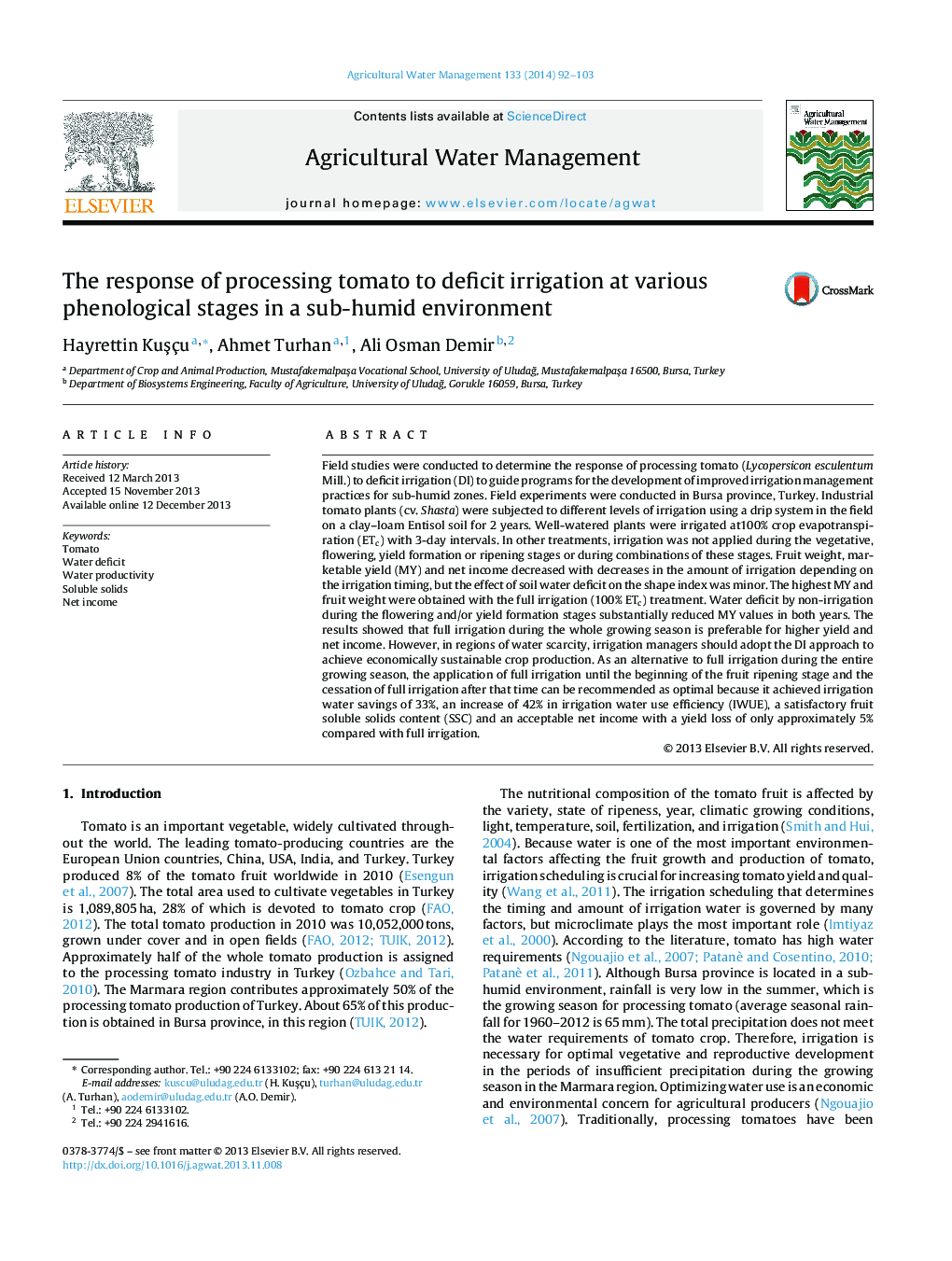| کد مقاله | کد نشریه | سال انتشار | مقاله انگلیسی | نسخه تمام متن |
|---|---|---|---|---|
| 4478692 | 1622946 | 2014 | 12 صفحه PDF | دانلود رایگان |
• Effects of deficit irrigation (DI) for processing tomato in a sub-humid environment were determined.
• Vegetative, flowering, yield formation and ripening stages of the crop were considered for DI strategies.
• Full irrigation is preferable for higher yield and net income.
• The best compromise among quality, quantity and net income may be achieved with irrigations omitted during ripening stage only.
Field studies were conducted to determine the response of processing tomato (Lycopersicon esculentum Mill.) to deficit irrigation (DI) to guide programs for the development of improved irrigation management practices for sub-humid zones. Field experiments were conducted in Bursa province, Turkey. Industrial tomato plants (cv. Shasta) were subjected to different levels of irrigation using a drip system in the field on a clay–loam Entisol soil for 2 years. Well-watered plants were irrigated at100% crop evapotranspiration (ETc) with 3-day intervals. In other treatments, irrigation was not applied during the vegetative, flowering, yield formation or ripening stages or during combinations of these stages. Fruit weight, marketable yield (MY) and net income decreased with decreases in the amount of irrigation depending on the irrigation timing, but the effect of soil water deficit on the shape index was minor. The highest MY and fruit weight were obtained with the full irrigation (100% ETc) treatment. Water deficit by non-irrigation during the flowering and/or yield formation stages substantially reduced MY values in both years. The results showed that full irrigation during the whole growing season is preferable for higher yield and net income. However, in regions of water scarcity, irrigation managers should adopt the DI approach to achieve economically sustainable crop production. As an alternative to full irrigation during the entire growing season, the application of full irrigation until the beginning of the fruit ripening stage and the cessation of full irrigation after that time can be recommended as optimal because it achieved irrigation water savings of 33%, an increase of 42% in irrigation water use efficiency (IWUE), a satisfactory fruit soluble solids content (SSC) and an acceptable net income with a yield loss of only approximately 5% compared with full irrigation.
Journal: Agricultural Water Management - Volume 133, February 2014, Pages 92–103
